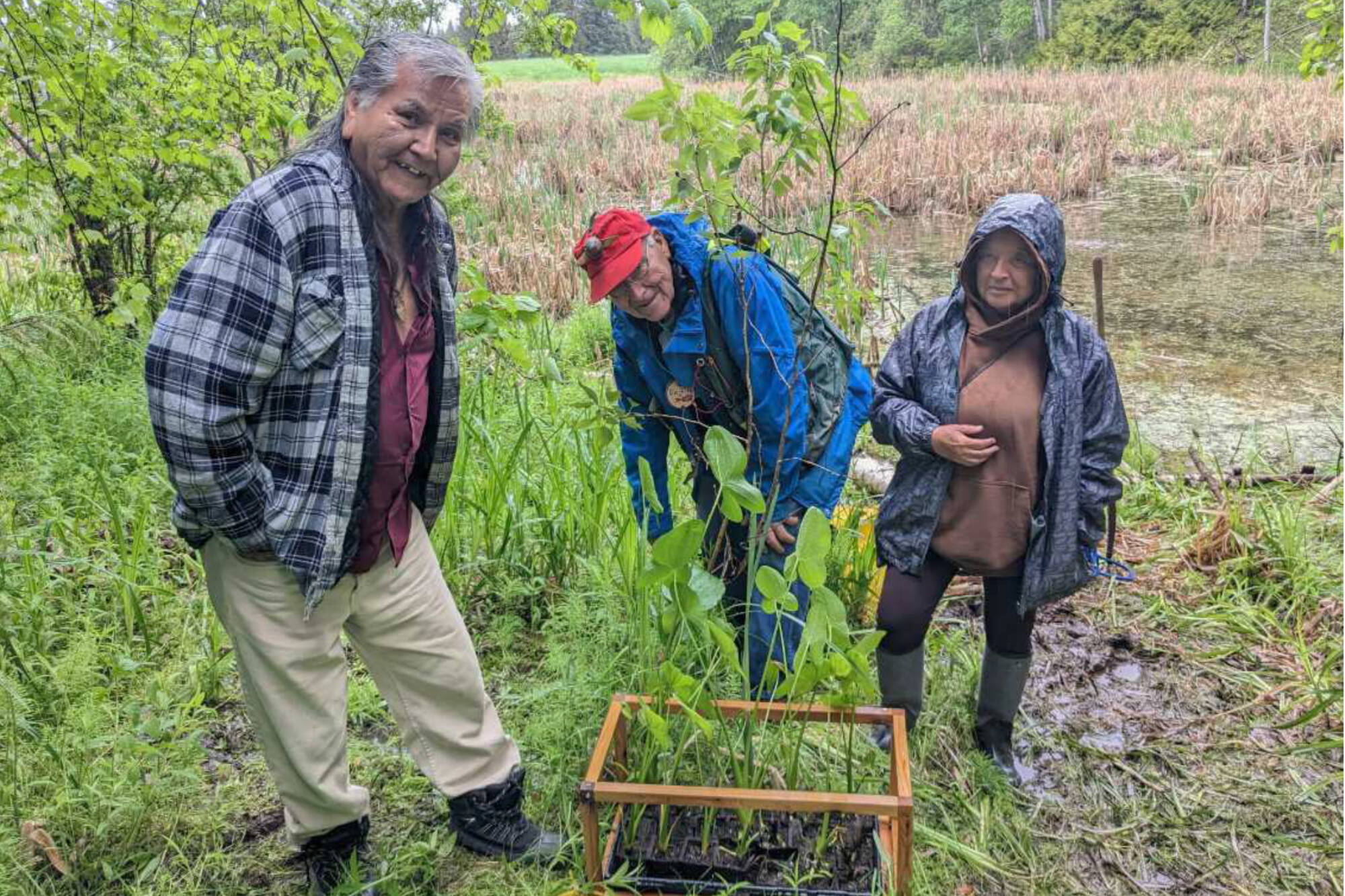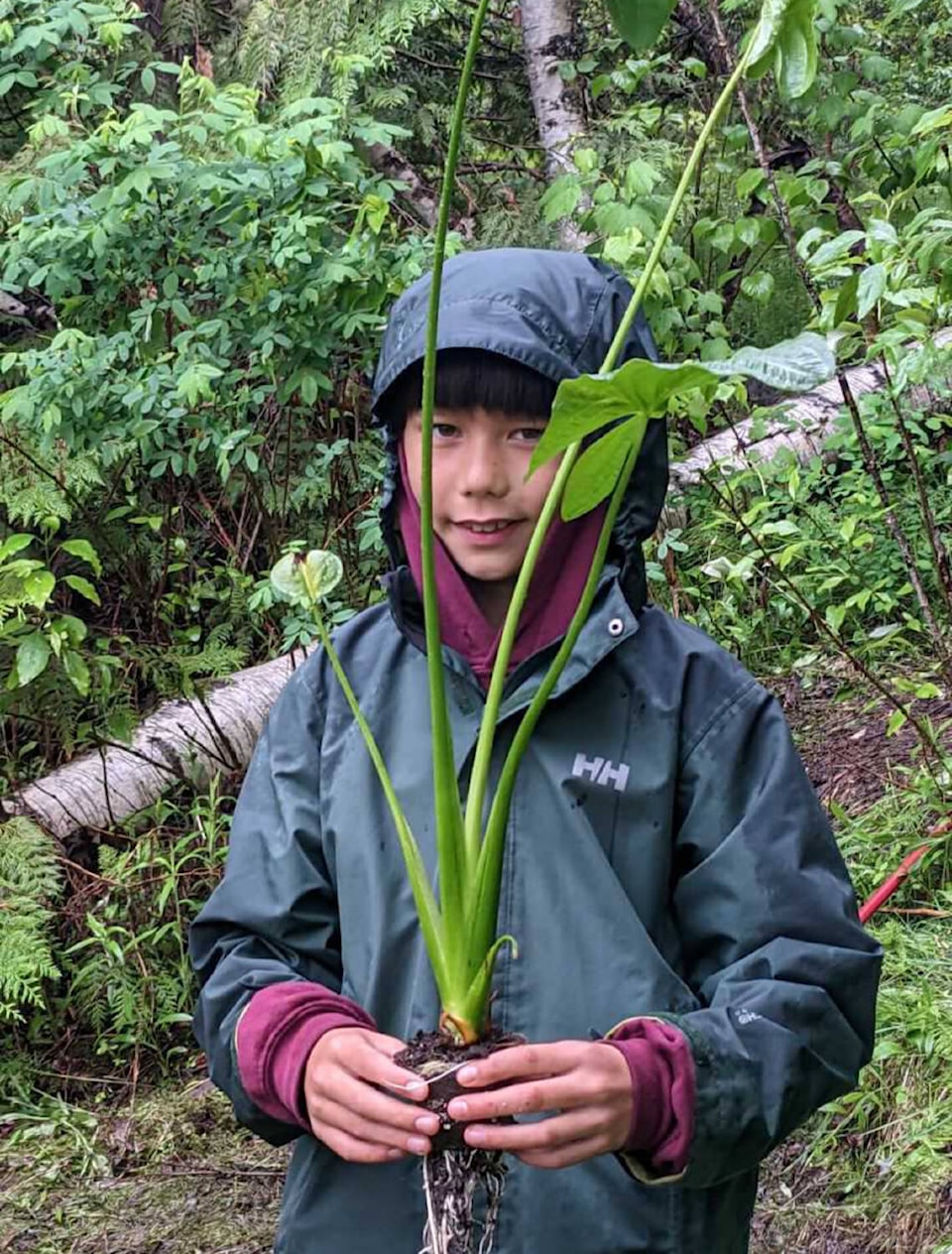In the Salmon River delta near Salmon Arm, a story of loss may become a story of hope.
The wapato (ckwalkwalus in Secwepemctsin) is a root crop grown in wetlands that was one of the Secwépemc staples. However, that changed over the past century with the loss of wetlands due to development, the thriving of invasive plants and the changing of traditions and diet following European arrival.
The wapato was one of the latest crops to be harvested in the fall, recalls Louis Thomas, Secwépemc knowledge keeper, who emphasizes he is not an expert in plants. His mother, esteemed elder Dr. Mary Thomas, was.
He is, however, well-known in the community for his work building bridges and developing allies with people in order to preserve Secwépemc culture, language and the environment.
He said he is sad salmon 91������Ƶ�are gone pretty well91������Ƶ� from the river.
91������Ƶ�I tried looking after it. That91������Ƶ�s how we started the Salmon River Roundtable. To start looking after them. But they91������Ƶ�re disappearing.91������Ƶ�
So now he91������Ƶ�s turning his attention to indigenous plants, like wapato, sometimes compared to the potato.
91������Ƶ�I think in the process, too, maybe we91������Ƶ�re looking at a new way of agriculture. I know our people a long time ago depended on Mother Nature to help us.91������Ƶ�
He points to the importance of growing crops that can survive without too much human intervention or extra water.
Thomas teamed up with Kim Fulton, enthusiastic environmental educator and retired teacher and principal, who is best known to some as Dr. Fish.
Their goal: to bring back the wapato.
Fulton secured grant funding and a committee was formed which included Chelsea Prince, School District 8391������Ƶ�s director of instruction - Indigenous education; Diyame Derrick Caterer, Indigenous student services coordinator at Okanagan College in Salmon Arm-Revelstoke; Ceren Caner, teacher at the South Canoe outdoor school; and Jake Jakobsen, teacher at Salmon Arm West.
Fulton discovered that many First Nations used wapato as a key source of starch in the winter. On the banks of the Pitt River in the Lower Mainland, a shelf built for harvesting the root was carbon dated from 4,500 to 6,000 years ago.
Fulton was able to get tubers from Vancouver Island, which were started in Shuswap classrooms in little wooden 91������Ƶ�aquariums91������Ƶ� he built. Fulton said wapato are also called duck potatoes as pin-tailed ducks and muskrats really like them.
91������Ƶ�So it91������Ƶ�s restoring an ecosystem for the natural system as well as humans,91������Ƶ� he said.
Then, in May, South Canoe students from Ceren Caner91������Ƶ�s class put on their boots 91������Ƶ� joined by Fulton, Caner, Thomas and his sister-in-law Mary Thomas 91������Ƶ� and spent a happy time in the mud, planting wapato in a nearby pond for study purposes. A harvest celebration will take place in the fall as part of what91������Ƶ�s being called the Growing Together Project.
Louis Thomas remembers his grandmothers talking about harvesting the plants in their bare feet in a foot or two of water.
91������Ƶ�They could feel around on their toes and they followed the stem down, feel around with their toes, keep playing around and they91������Ƶ�ll pop to the surface.91������Ƶ�
Read more:
Read more:
Fulton said for all those involved, growing and planting the tubers was a 91������Ƶ�really neat way to bring our cultures together and develop further understanding of each other.91������Ƶ�
Thomas91������Ƶ� hope is to go through the steps to dredge an old river bed, keep lots of water in it and establish a harvest area with possibly high-bush cranberries along the edge. He said canary grass interfered with a planting in the delta as it almost creates concrete pads with its strong roots, making it impossible to dig up the plants.
Thomas said he is often asked if he has any answers to climate change.
91������Ƶ�I say it91������Ƶ�s hard to battle against Mother Nature,91������Ƶ� he said. 91������Ƶ�I think it91������Ƶ�s about learning to adapt and learning how to adapt to everything. And hopefully the answer will eventually come.91������Ƶ�
Tracey Kutschker, director/curator of the Salmon Arm Arts Centre, said the wapato restoration has become a bigger project than simply the planting by the class. She said Mary Thomas accompanied the class to photograph the process, so the art gallery can include it in the exhibition, Le7 Tmicw, which is about acts of healing from all the effects of climate change.
91������Ƶ�That91������Ƶ�s where I91������Ƶ�m so appreciative of Louis and Mary for documenting this whole process of recovering indigenous food plants. Because we can show there91������Ƶ�s hope. There91������Ƶ�s hope in recovery of the plants; adaptation is faster with plants. So there91������Ƶ�s definitely the sense of hope for the ability of Indigenous food plants to come back.91������Ƶ�




